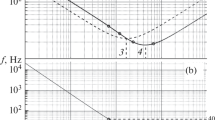Abstract
In this paper we study the evolution of the matter distribution pattern of ink droplets falling freely into calm water and forming a cumulative back jet by tracing with high-speed video recording. In the phase of primary contact and immersion, the matter of a drop merging with the receiving liquid is distributed in the form of fine fibers forming a regular striped pattern on the surface of the growing crown and a net pattern consisting of three-, four-, and pentagonal cells at the cavity bottom. The fibrous distributions of the colored liquid remain at all subsequent stages of the flow evolution until the formation of a vortex cascade. Then the picture is blurred due to molecular diffusion in a practically quiescent liquid. The formation of a discrete (fibrous) pattern of the drop matter distribution is associated with the compactness of the region of release of the available potential surface energy during the confluence of liquids that initiates a fast movement of a thin layer. Subsequent fiber preservation is provided by the slowness of molecular diffusion.





Similar content being viewed by others
REFERENCES
M. Szakáll, S. K. Mitra, K. Diehl, and S. Borrmann, “Shapes and oscillations of falling raindrops: A review,” Atmos. Res. 97, 416–425 (2010). https://doi.org/10.1016/j.atmosres.2010.03.024
J. W. Strutt (Lord Rayleigh), “On the capillary phenomena of jets,” Proc. R. Soc. London 29, 71–97 (1879).
A. V. Kistovich and Yu. D. Chashechkin, “Surface oscillations of a free-falling droplet of an ideal fluid,” Izv., Atmos. Ocean. Phys. 54 (2), 182–188 (2018). https://doi.org/10.7868/S0003351518020095
A. G. Gorelik and V. V. Sterlyadkin, “The effect of raindrop vibration on the polarization characteristics of a radio echo,” Izv. Akad. Nauk SSSR: Fiz. Atmos. Okeana 25 (9), 960–968 (1989).
F. Veron, “Ocean spray,” Ann. Rev. Fluid Mech. 47, 507–538 (2015). https://doi.org/10.1146/annurev-fluid-010814-014651
E. C. Monahan, A. Staniec, and P. Vlahos, “Spume drops: Their potential role in air–sea gas exchange,” J. Phys. Oceanol. 122 (12), 9500–9517 (2017). https://doi.org/10.1002/2017JC013293
V. E. Prokhorov and Yu. D. Chashechkin, “Emission of the sequence of sound packets during a drop falling onto the surface of water,” Dokl. Phys. 57 (3), 114–118 (2012). https://doi.org/10.1134/S1028335812040076
G. Z. Zhu, Z. H. Li, and D. Y. Fu, “Experiments on ring wave packet generated by water drop,” Chin. Sci. Bull. 53 (11), 1634–1638 (2008). https://doi.org/10.1007/s11434-008-0246-0
Yu. D. Chashechkin and V. E. Prokhorov, “Drop-impact hydrodynamics: Short waves on a surface of the crown,” Dokl. Phys. 58 (1), 296–300 (2013). https://doi.org/10.1134/S1028335813070021
A. Yu. Il’inykh and Yu. D. Chashechkin, “Hydrodynamics of contact of a falling drop with a liquid free surface,” Fluid Dyn. 51 (2), 127–135 (2016). https://doi.org/10.7868/S0568528116020092
B. D. L. Fitt, H. A. McCartney, and P. Walkalate, “The role of rain in dispersal of pathogen inoculum,” Ann. Rev. Phytopathol. 27, 241–270 (1989). https://doi.org/10.1146/annurev.py.27.090189.001325
H. Liu and P. K. Dasgupta, “Analytical chemistry in a drop,” Trends Anal. Chem. 15 (9), 468–475 (1996). https://doi.org/10.1016/S0165-9936(96)00065-9
E. V. Stepanova, M. V. Trofimova, T. O. Chaplina, and Yu. D. Chashechkin, “Structural stability of substance transport in a compound vortex,” Izv., Atmos. Ocean. Phys. 48 (5), 516–527 (2012). https://doi.org/10.1134/S000143381205009X
B. Ray, G. Biswas, and A. Sharma, “Regimes during liquid drop impact on a liquid pool,” J. Fluid Mech. 768, 492–523 (2015). https://doi.org/10.1017/jfm.2015.108
Yu. D. Chashechkin, “Drops: crowns, spikes, sounds...,” Priroda, No. 11, 13–23 (2016).
Yu. D. Chashechkin and A. Yu. Il’inykh, “Banded structures in the distribution pattern of a drop over the surface of the target fluid,” Dokl. Phys. 63 (7), 282–287 (2018). https://doi.org/10.1134/S1028335818070066
L. D. Landau and E. M. Lifshits, Theoretical Physics, Vol. 5: Statistical Physics (Nauka, GRFML, 1976), Part 1 [in Russian].
X.-F. Pang, Water: Molecular Structure and Properties (World Scientific, Singapore, 2014).
D Eisenberg and W Kauzmann, The Structure and Properties of Water (Oxford University Press, Oxford, 1969; Gidrometeoizdat, Leningrad, 1975).
L. D. Landau and E. M. Lifshits, Theoretical Physics, Vol. 6: Hydrodynamics (Nauka. GRFML, 1986) [in Russian].
Yu. D. Chashechkin, “Singularly perturbed components of flows—linear precursors of shock waves,” Math. Modell. Nat. Phenom. 13 (2), 1–29 (2018). https://doi.org/10.1051/mmnp/2018020
Yu. D. Chashechkin, “Waves, vortices and ligaments in fluid flows of different scales,” Phys. Astron. Int. J. 2 (2), 105–108 (2018). https://doi.org/10.15406/paij.2018.02.00070
H. Oertel Jr., Prandtl – Führer durch die Strömungslehre (F. Vieweg & Sohn, Braunschweig, 1949; NITs RKhT, Moscow–Izhevsk, 2007).
Hydrophysical complex for modeling hydrodynamic processes in the environment and their effect on underwater technical objects as well as transport of admixtures in the ocean and atmosphere (HPC IPM RAS). http://www.ipmnet.ru/uniqequip/gfk/
Yu. D. Chashechkin and V. E. Prokhorov, “Primary acoustic signal structure during free falling drop collision with a water surface,” J. Exp. Theor. Phys. 122 (4), 748–758. https://doi.org/10.1134/S1063776116020175
ACKNOWLEDGMENTS
The experiments were carried out at the stand of the ESP Hydrophysical Complex of the Institute for Problems of Mechanics, Russian Academy of Sciences. I am grateful to V.E. Prokhorov for assistance in conducting experiments and to an anonymous reviewer for valuable comments.
Author information
Authors and Affiliations
Corresponding author
Ethics declarations
This work was supported in part by the Russian Foundation for Basic Research, project no. 18-05-00870.
Additional information
Translated by A. Ivanov
Rights and permissions
About this article
Cite this article
Chashechkin, Y.D. Evolution of the Fine Structure of the Matter Distribution of a Free-Falling Droplet in Mixing Liquids. Izv. Atmos. Ocean. Phys. 55, 285–294 (2019). https://doi.org/10.1134/S0001433819020026
Received:
Revised:
Accepted:
Published:
Issue Date:
DOI: https://doi.org/10.1134/S0001433819020026




